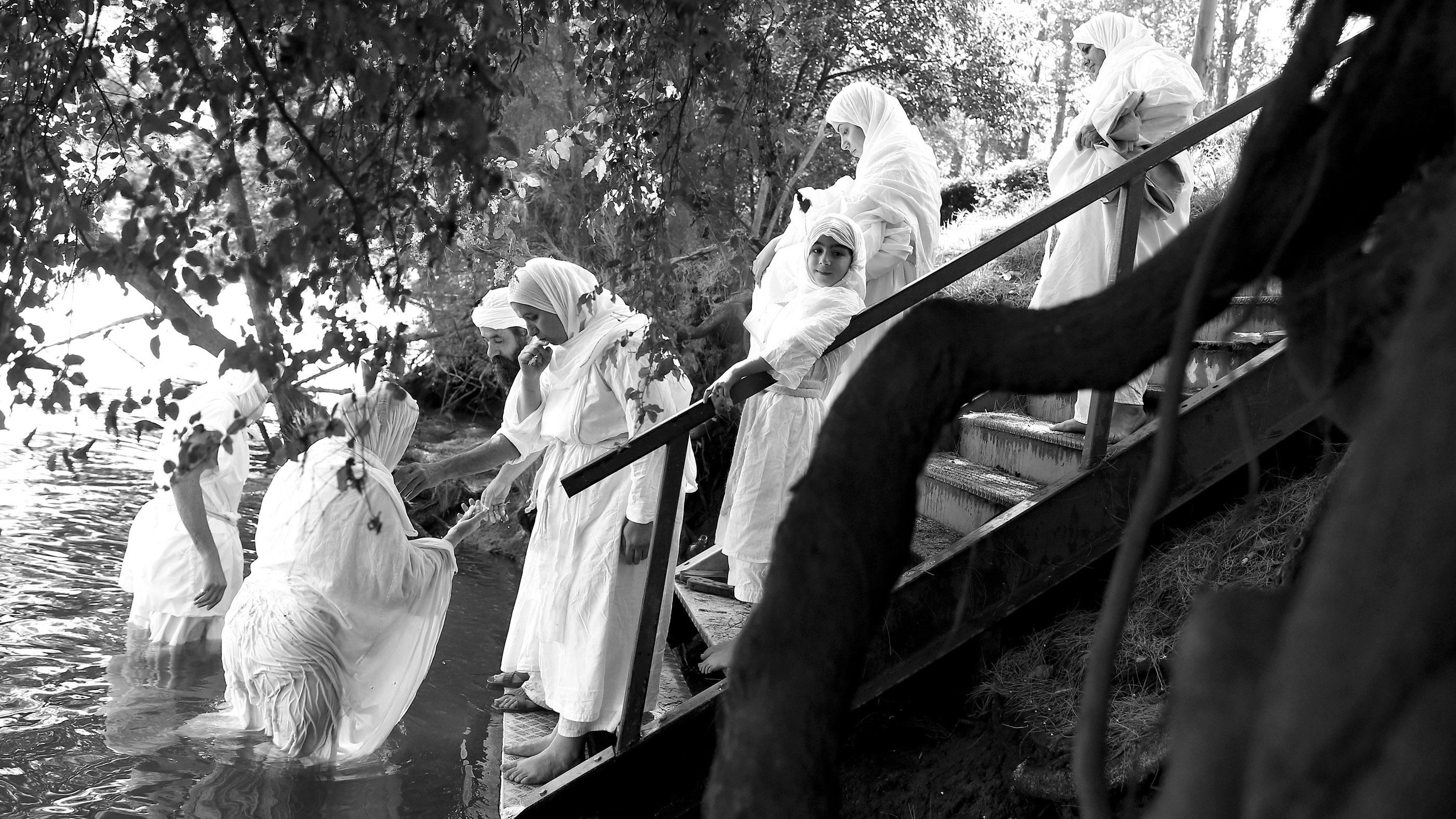Magical amulet decoded. It protected owner from blood-sucking spirits.

A newly deciphered magical amulet claims to stop evil spirits "who eat flesh and drink blood," archaeologists have found.
About 1,600 years ago, the Mandaeans, who have lived in southern Iraq and Iran for millennia, wrote the incantation onto a lead amulet in their language Mandaic. When unfolded, the amulet looks like a long thin piece of lead.
The discovery could shed light on the Mandaean religion, which is complex and blends together several beliefs. Both John the Baptist and archangel Gabriel are both important figures who practiced the religion. Modern-day Mandaeans often ritually immerse themselves in water as a form of purification, and they follow a pacifist philosophy in which violence cannot be used even in self defense.
Related: In photos: Ancient city discovered in Iraq
According to the deciphered text, the amulet was meant to protect a man named Abbiya from blood-drinking spirits and a demon. "In the name of life, may there be health to the spirit and soul of Abbiya, the son of Mahua," the translated text says. The amulet calls on Gabriel, who is the "angel of the gods," to "throw down, bind, strike, kill and fetter the demon." It also calls on Gabriel to stop “spirits who eat flesh and drink blood" from hurting Abbiya. "From the sons and daughters, may a great voice, healing, victory, sealing, protection, and sealing be to the body and spirit and soul of Abbiya…" the amulet says.
The amulet is about 8 inches long and 1.7 inches wide (20.3 by 4.4 centimeters) and contains 62 lines of writing, Tom McCollough, an emeritus professor of religion at Centre College in Danville, Kentucky, said in a presentation recently at the virtual joint annual meeting of the Archaeological Institute of America (AIA) and the Society for Classical Studies (SCS).
Amulet origins
Centre College purchased the unrolled amulet, along with two others, from a collector in 2009 for $5,000. At the time of purchase, the collector said that the amulets were purchased by a family member in Jerusalem in the 1950s, presenting photographs supporting this claim, McCollough said. These photographs are important, as southern Iraq has been looted heavily over the past few decades; and McCollough said that many journals will not publish inscriptions from Iraq unless there is proof that they were not recently looted.
Sign up for the Live Science daily newsletter now
Get the world’s most fascinating discoveries delivered straight to your inbox.
Related: 7 biblical sites ravaged by modern-day looters
At time of publication, the researchers were unable to share the photographs with Live Science or reveal the identity of the collector.
The three amulets are made out of lead and have a copper casing. By analyzing the amount of corrosion on the deciphered amulet, Centre College chemist Jeff Fieberg found it dates to at least A.D. 450 and perhaps earlier, Fieberg said. Used this dating method on another of the amulets purchased from the collector, Fieberg found that it dated to at least A.D. 750.
Because the amulets are so old, they can provide clues as to how the religion of Mandaeanism evolved over time, the researchers said. "The only thing we have from the early period are these magical implements," McCollough said.
Living Religion

An estimated 50,000 Mandaeans are alive today. For millennia, they were based in southern Iraq and Iran; but they faced persecution during the rule of former Iraq president Saddam Hussein and were targeted by some militant groups after the 2003 U.S. invasion of Iraq. As a result, many Mandaeans were forced to flee Iraq, with some now living in the United States, Australia, Sweden, the United Kingdom and Canada.
Live Science reached out to members of the Mandean community to get their thoughts on the amulet and their religion, though none responded at the time of publication.
Research into the amulets is ongoing. Recently, researchers were able to unroll the amulet that dated to A.D. 750 and are in the process of deciphering the writing.
Originally published on Live Science.

Owen Jarus is a regular contributor to Live Science who writes about archaeology and humans' past. He has also written for The Independent (UK), The Canadian Press (CP) and The Associated Press (AP), among others. Owen has a bachelor of arts degree from the University of Toronto and a journalism degree from Ryerson University.









